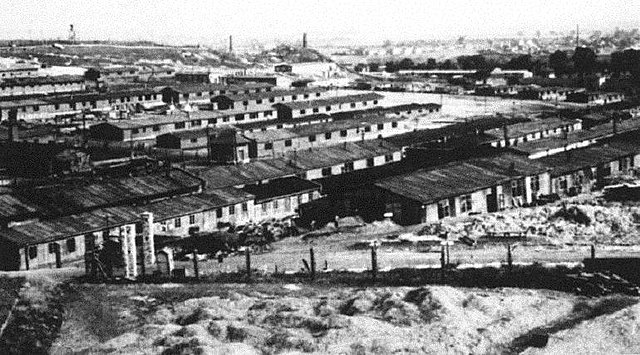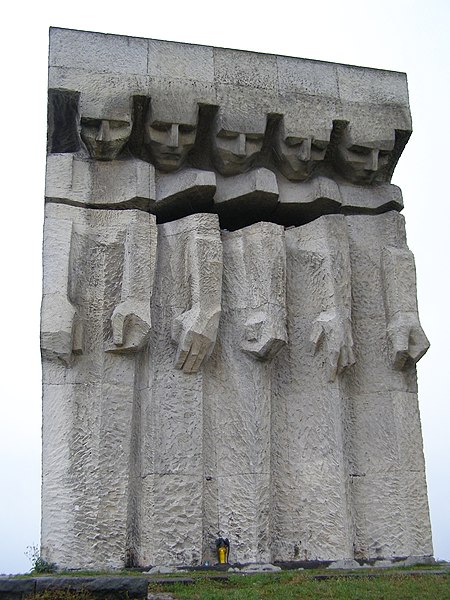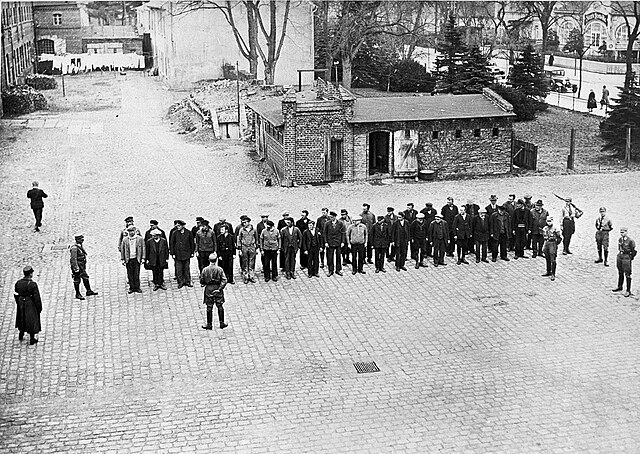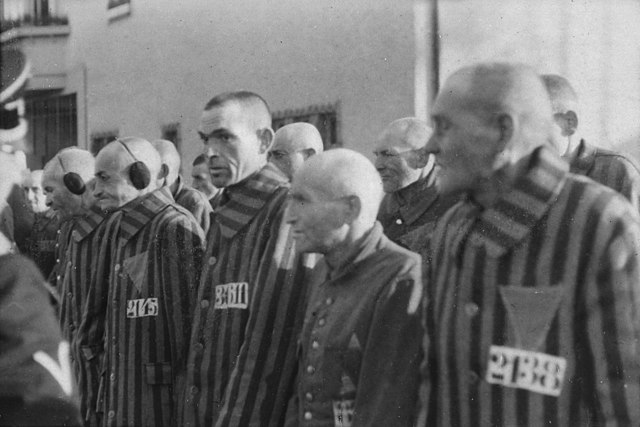Kraków-Płaszów concentration camp
Płaszów or Kraków-Płaszów was a Nazi concentration camp operated by the SS in Płaszów, a southern suburb of Kraków, in the General Governorate of German-occupied Poland. Most of the prisoners were Polish Jews who were targeted for destruction by Nazi Germany during the Holocaust. Many prisoners died because of executions, forced labor, and the poor conditions in the camp. The camp was evacuated in January 1945, before the Red Army's liberation of the area on 20 January.
Kraków-Płaszów in 1942
The balcony of Amon Göth's villa in Płaszów. Although Göth was ruthless and would shoot at prisoners, he could not do so from this balcony as the terrain and the layout of the camp infrastructure precluded this. He used to step outside to hunt humans, with his Tyrolean hat marking his intentions. It was the signal for seasoned prisoners to attempt to hide.
Płaszów Memorial (erected in 1964)
The sign at the main entrance to the Płaszów camp memorial area
From 1933 to 1945, Nazi Germany operated more than a thousand concentration camps, including subcamps on its own territory and in parts of German-occupied Europe.
Prisoners guarded by SA men line up in the yard of Oranienburg, 6 April 1933
Heinrich Himmler inspects Dachau on 8 May 1936.
Prisoners at Sachsenhausen, 19 December 1938
Forced labor at Sachsenhausen brickworks








